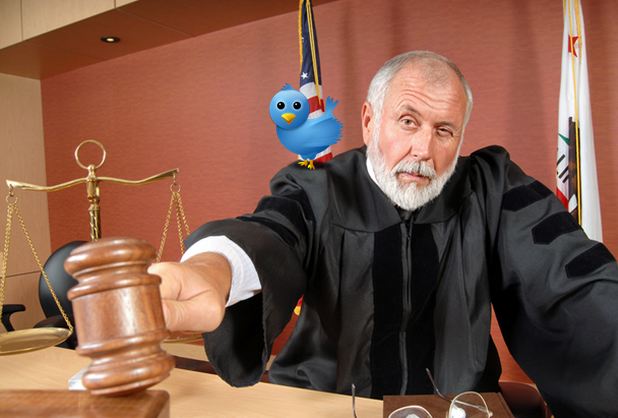By {grow} Contributing Columnist Kerry Gorgone
Nothing spoils a great marketing campaign like a cease and desist letter. As an attorney, I’m fascinated by how fast and loose most people play on the web, just inviting such a letter!
Whether you ultimately win or lose, playing the litigation game can cost more money than most businesses can afford. Of course, there’s always the chance someone will sue you, warranted or not, but here are some tips for minimizing risk with web-based content.
1. The difference between LINKING and SCRAPING
The absolute safest course of action is to create your own original content, from the copy on your website to the videos you post to YouTube and the images you upload to Pinterest.
Contrary to popular belief, providing attribution for content you’ve copied and pasted (aka “scraping”) does not protect you from liability. If anything, it increases the risk you’ll get sued by alerting the content owner to the infringement. Of course, scraping someone else’s blog content is a no-no.
Linking, on the other hand, is generally legal. People post content online hoping it will be seen and shared. They can hardly complain after the fact when you share a link to that content, provided you don’t reproduce it wholesale on your own site or social media feed.
The problem with Pinterest and similar sites is that you copy the image itself and upload it, which technically violates copyright. While a smart content owner shouldn’t sue over this use, in my opinion, that doesn’t mean they won’t. Read the terms of use for each social network carefully before jumping in, and if you choose to share content, be sure to link, as opposed to copying and pasting, or even embedding.
The same goes for images. Be sure to “watermark” your images. Make sure your pictures include your URL or company name, so you protect your own intellectual property rights.
2. Go the extra step and get permission.
Without permission, using someone else’s content is infringement. With permission, it’s free publicity for them, great content for you. Agreement is win/win, as opposed to litigation, which is generally lose/lose. Just the act of seeking permission can also create new connections. It can be a networking tool. Most people are honored to be asked. So take that step.
3. Use content that’s licensed under Creative Commons.
If you’ve encountered writer’s block and can’t get permission for any suitable content that someone else has created, consider using content released pursuant to a Creative Commons license. These licenses allow use of the subject work, provided certain conditions are met.
Creative Commons licenses range from very permissive, requiring only attribution (credit), to more restrictive, such as licenses forbidding any change to the work. As a marketer, always avoid material released under a Creative Commons license that forbids commercial use.
4. Choose an original name.
You can save yourself headaches right out of the gate by choosing a unique name for your company, blog, brand or product. This is why we see so many crazy names on the web like ZipperFish and Stagnant Ape (kidding). Search existing trademarks. Avoid anything in the same industry that comes too close, or anything that looks similar. Bear in mind that each state has a trademark registration system, too, so be sure and search the state registry for the state your business is based out of, as well as the federal system.
5. Don’t play games with games.
Having online games or competitions can be tricky because you can’t violate the law when conducting an online contest, giveaway or sweepstakes. First and foremost, avoid “lotteries,” which involve people paying for a chance to win. These are illegal in most countries except for state lotteries and authorized raffles. When running a sweepstakes, be scrupulous about posting the rules, and keep them consistent throughout the promotion period. Changing the game halfway through will likely get you into trouble with each state’s Attorney General, not to mention the Federal Trade Commission.
State clearly who is eligible to participate, what they need to do, how winners will be selected, etc. Always include “void where prohibited,” to ensure you are in compliance with any state regulations banning your promotion.
If you’re running a contest based on skill, either make your contest “no purchase necessary,” or exclude entries from states where a purchase requirement is illegal. Again, explain in detail how people can enter and how winners will be chosen.
Whatever type of promotion you run, get permission from entrants up front to use their image and likeness should they win.
6. Be honest (It’s the law!)
Be accurate in any statements you publish via social media. Lying about competitors or their products can get you sued for defamation or interference with contractual relations. Lying about your own product can get you fined for violating truth in advertising laws.When engaging your prospects via social media, your content should not consist of sales pitches anyway, but since you’re likely to sell at some point, remember: honesty is the only policy.
This holds doubly true for any disclosures that the FTC may require (PDF). What’s clearly sponsored content to you might look like your own, unbiased opinion to the average web user, so when in doubt, disclose. There’s virtually no downside. There are even free online tools that can help you to create your own custom disclosure statement.
The FTC assesses any complaints on a case-by-case basis, so figuring out what’s going to pass muster can be a challenge for bloggers. Your best bet is to disclose in the post itself if you’ve received anything of value in exchange for blogging about a product, service or company. The FTC has indicated that a “disclosure” button or other blanket solution may not go far enough to ensure that your readers are fully informed.
7. Use tools like Hootsuite with caution.
I’m a huge fan of social media management tools like Hootsuite, Seesmic, and TweetDeck that enable you to populate numerous social network feeds from a single application. The risk in using these, of course, is the ease with which you can send a personal post from a company account. Notable incidents include KitchenAid’s unfortunate foray into politics via accidental tweet, as well as the tweet that went out from Chrysler’s official feed disparaging Detroit drivers.An ounce of prevention is worth a pound of cure: disable all personal accounts from the services you use to populate your company feeds.
In this day and age, people can sue anyone (and frequently do), but implementing these suggestions can help to minimize the risk that you’d be found liable, which makes a lawsuit less attractive to your opponent.
What concerns do you have about the law and your social media presence?

Illustration courtesy BigStock.com



